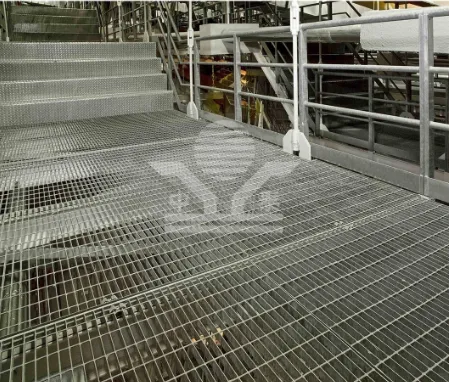Understanding Grate Mesh Applications, Benefits, and Types
Grate mesh, often referred to in various industries as expanded metal, perforated panels, or simply mesh, plays a critical role in diverse applications, ranging from construction and architecture to industrial manufacturing and environmental management. This versatile material comprises a series of interconnected strands or wires that create a grid-like structure, allowing for optimal airflow, visibility, and strength. In this article, we will delve into the characteristics, types, applications, and benefits of grate mesh.
Characteristics of Grate Mesh
Grate mesh is highly regarded for its unique physical properties. It is lightweight yet exceptionally strong, capable of withstanding substantial loads. The open design of grate mesh provides excellent ventilation and drainage, making it ideal for environments that require these features. Additionally, it is made from various materials, including steel, stainless steel, aluminum, and plastic, allowing for customization based on the specific requirements of different projects.
One of the primary advantages of grate mesh is its durability. When manufactured from high-quality materials, it can resist corrosion, rust, and wear, which is particularly beneficial in outdoor or industrial applications. The mesh can also be treated with coatings or finishes to enhance its lifespan and aesthetic appeal.
Types of Grate Mesh
Grate mesh can be categorized into several types based on the manufacturing process and materials used
1. Expanded Metal Mesh Created by slitting and stretching flat sheets of metal, this type of grate mesh has a distinctive diamond-shaped pattern. It is commonly used for walkway gratings, security fencing, and decorative accents.
2. Perforated Metal Mesh This variant is made by punching holes into sheets of metal, resulting in a uniform pattern of openings. It is widely used in architectural applications, sound dampening solutions, and filtration systems.
3. Safety Grating This type integrates features like anti-slip surfaces, making it suitable for industrial flooring and platforms where safety is paramount.
4. Plastic Mesh Lightweight and resistant to chemicals, plastic mesh is often used in landscaping, horticulture, and temporary structures.
5. Wire Mesh Composed of intertwined wires, wire mesh is versatile and can be used for fences, cages, and screens.
grate mesh

Applications of Grate Mesh
The applications of grate mesh are extensive and varied. In construction, it is utilized for flooring, stair treads, and drain covers, providing essential support while allowing for effective drainage. In the architectural sector, perforated panels offer both aesthetic appeal and functional benefits, contributing to building façades, sunshades, and interior design elements.
In industrial settings, grate mesh finds use in the production of machinery and equipment, serving as filtration devices, screens, and safety barriers. Its strength and durability make it ideal for heavy-duty applications, including loading docks and manufacturing facilities.
Moreover, grate mesh plays a crucial role in environmental management. It can be used in erosion control systems, wildlife protection barriers, and in the creation of sustainable landscaping features, helping to support conservation efforts.
Benefits of Grate Mesh
The benefits of using grate mesh in various applications are multiple
- Increased Safety Its slip-resistant properties and robust construction help reduce the risk of accidents in commercial and industrial settings.
- Enhanced Aesthetics With various designs and finishes available, grate mesh can be both functional and visually appealing, complementing modern architectural designs.
- Environmental Sustainability Its recyclability and durability contribute to environmentally friendly construction practices, reducing the need for frequent replacements.
- Cost-Effectiveness The longevity and durability of grate mesh often result in lower maintenance and replacement costs over time, making it a financially sound investment.
Conclusion
Grate mesh represents a crucial component in contemporary design and industrial applications. Its combination of strength, versatility, and aesthetic appeal ensures that it will continue to be an essential material for a wide range of uses. As industries evolve and seek innovative solutions, the role of grate mesh will undoubtedly expand, reinforcing its importance in architectural, environmental, and industrial contexts. Understanding its characteristics and applications helps stakeholders make informed decisions, ultimately enhancing the functionality and efficiency of their projects.
-
The Best Metal Mesh Solutions: Expanded Aluminum Metal vs. Expanded Stainless Steel Metal
NewsSep.10,2024
-
Round Perforated Sheets vs. Hexagonal Perforated Sheets vs. Embossed Perforated Sheet Metal
NewsSep.10,2024
-
Perforated Metal Sheets
NewsSep.10,2024
-
Experience The Excellence Of Stainless Steel Grating
NewsSep.10,2024
-
Discover the Versatility Of Metal Mesh Expanded Forming Machines
NewsSep.10,2024
-
Discover The Advantages Of Steel Grating For Sale
NewsSep.10,2024
Subscribe now!
Stay up to date with the latest on Fry Steeland industry news.

